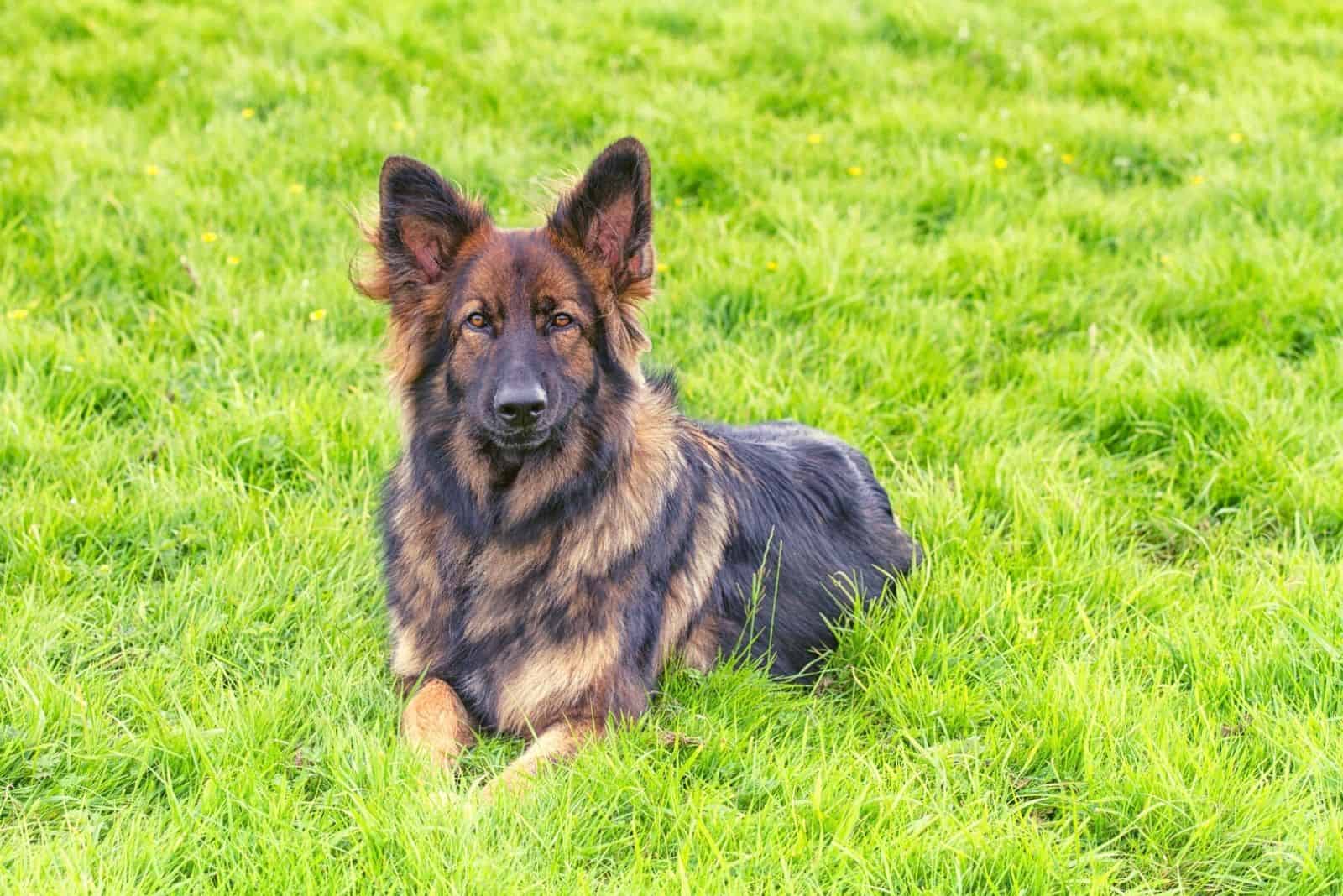Most people know how a German Shepherd dog looks. It is a large dog with a tan coat and black saddle markings.
While this is the most well-known German Shepherd color, it is far from the original coat color of this dog breed.
GSDs come in various other colors. Sable German Shepherds are just one of the color variations of this popular guard dog.
Do you want to learn more about the sable German Shepherd? Do these pups change color over time, and can you take them to participate in dog shows?
Here’s all you need to know about sable German Shepherds.
What Is a Sable German Shepherd?
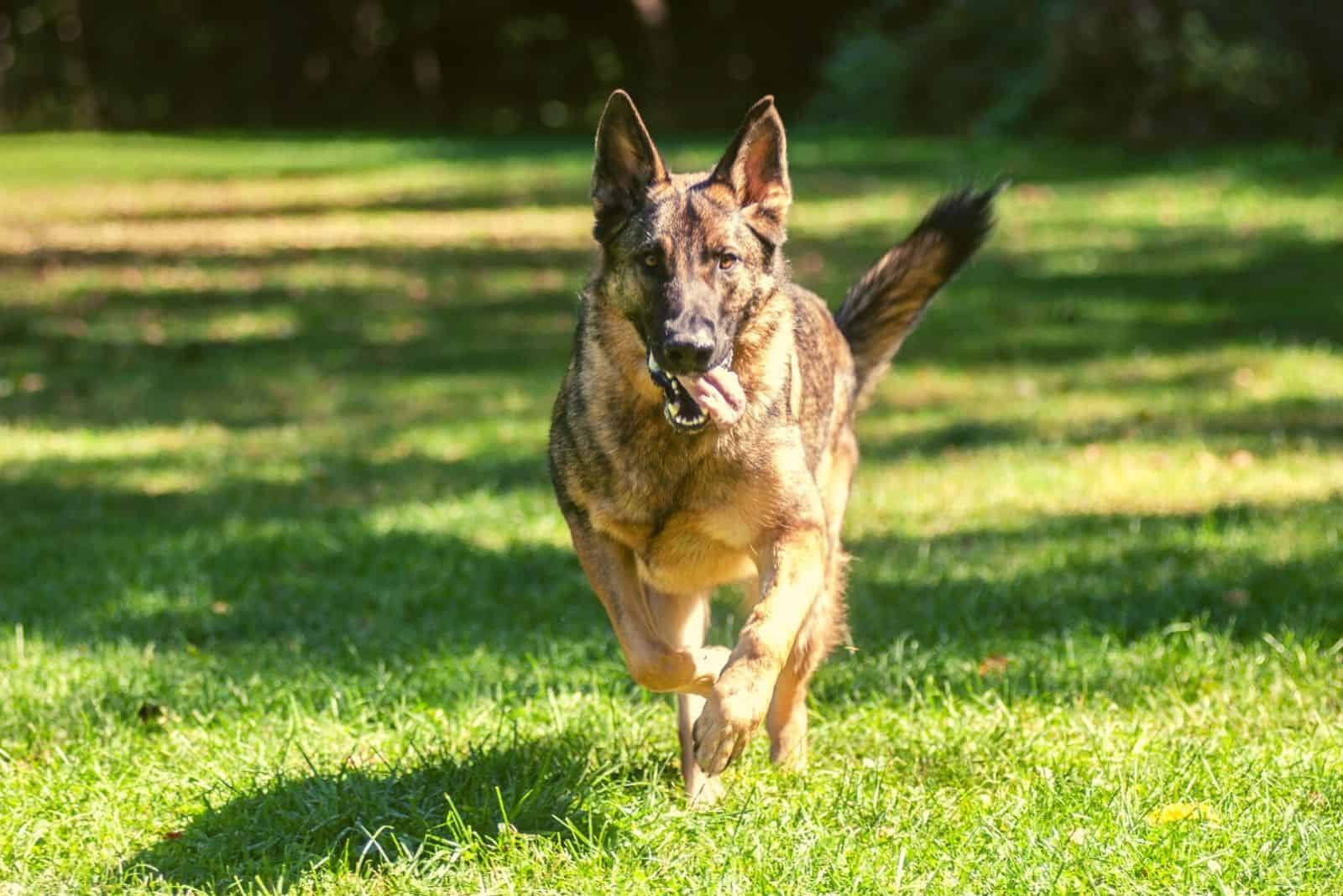
A sable German Shepherd is a GSD with a specific coat color and pattern. While most people know German Shepherds for their black and tan coat, the first GSD, Horand von Grafrath (also known as Hektor Linksrhein) was, in fact, a sable dog bred by Max von Stephanitz.
Sable German Shepherds are considered archetypal dogs as they have DNA similar to wolves. This is also the most dominant gene in the German Shepherd genetics.
All of the first German Shepherds were sable colored. Sable color actually means that the coat is multi-colored and has black tips. It can appear on any base coat. In the German Shepherd breed, this is usually red or tan.
Some breeders don’t call these pups sable German Shepherds. Instead, you can hear them use the term German Shepherd Agouti.
Sable German Shepherd Appearance
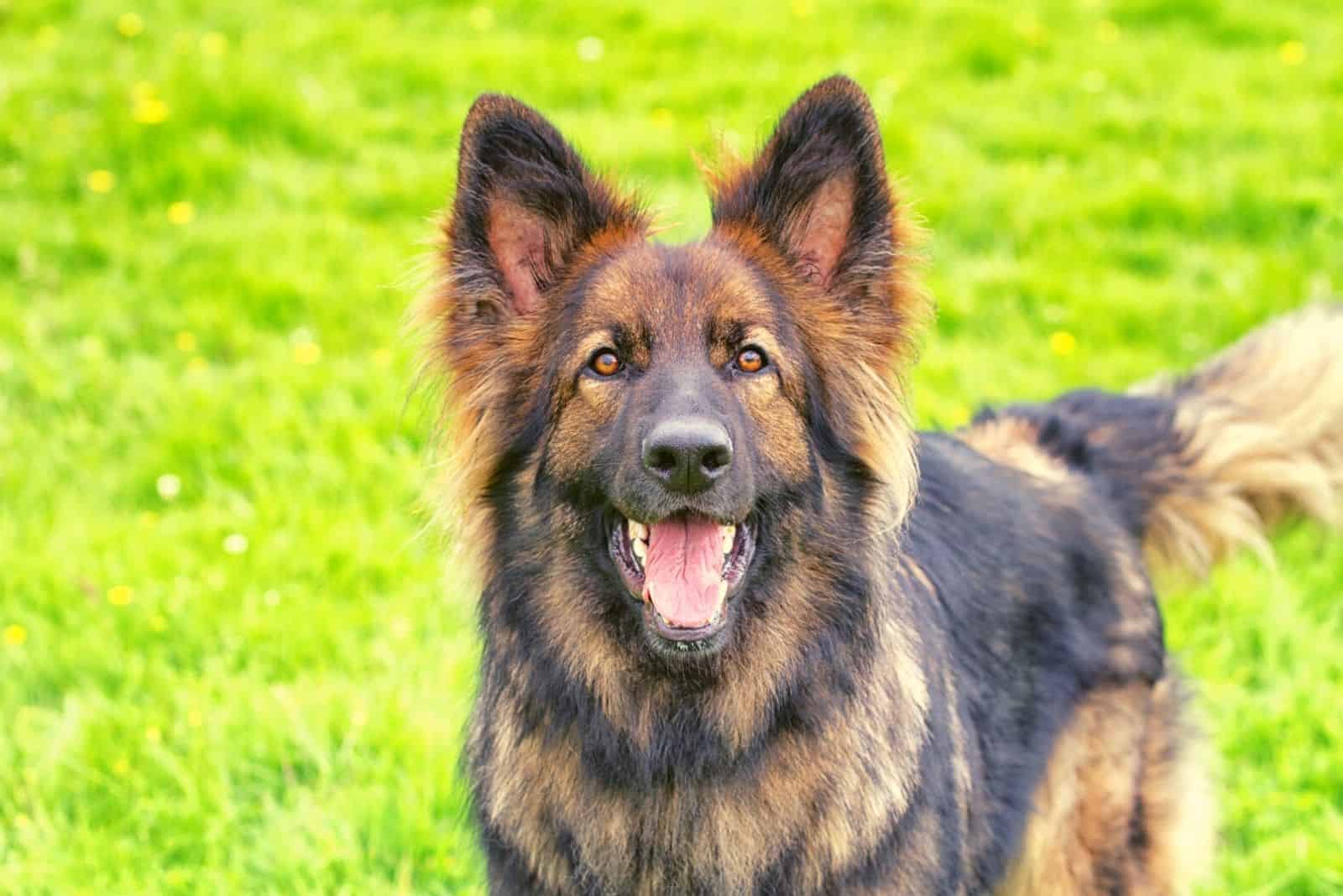
Other than their unique coat color, sable German Shepherds look just like any other German Shepherd.
These dogs can grow up to be between 24 and 26 inches depending on whether you have a female or a male GSD, respectively. Females can weigh between 55 and 73 lbs, while males can reach a weight of 95 lbs! This makes them significantly larger than females.
We’ve already mentioned that their fur is multi-colored, or banded. They won’t always have the saddle markings that this breed is known for. As for their base coat, it can be in any color that GSDs can come in, but it’ll usually be brown, red, silver, or sometimes even black.
Sable German Shepherds come in various color patterns. However, the most common ones are liver on cream, black on cream, black on red, and sometimes even silver on cream.
Do Sable German Shepherds Change Color?
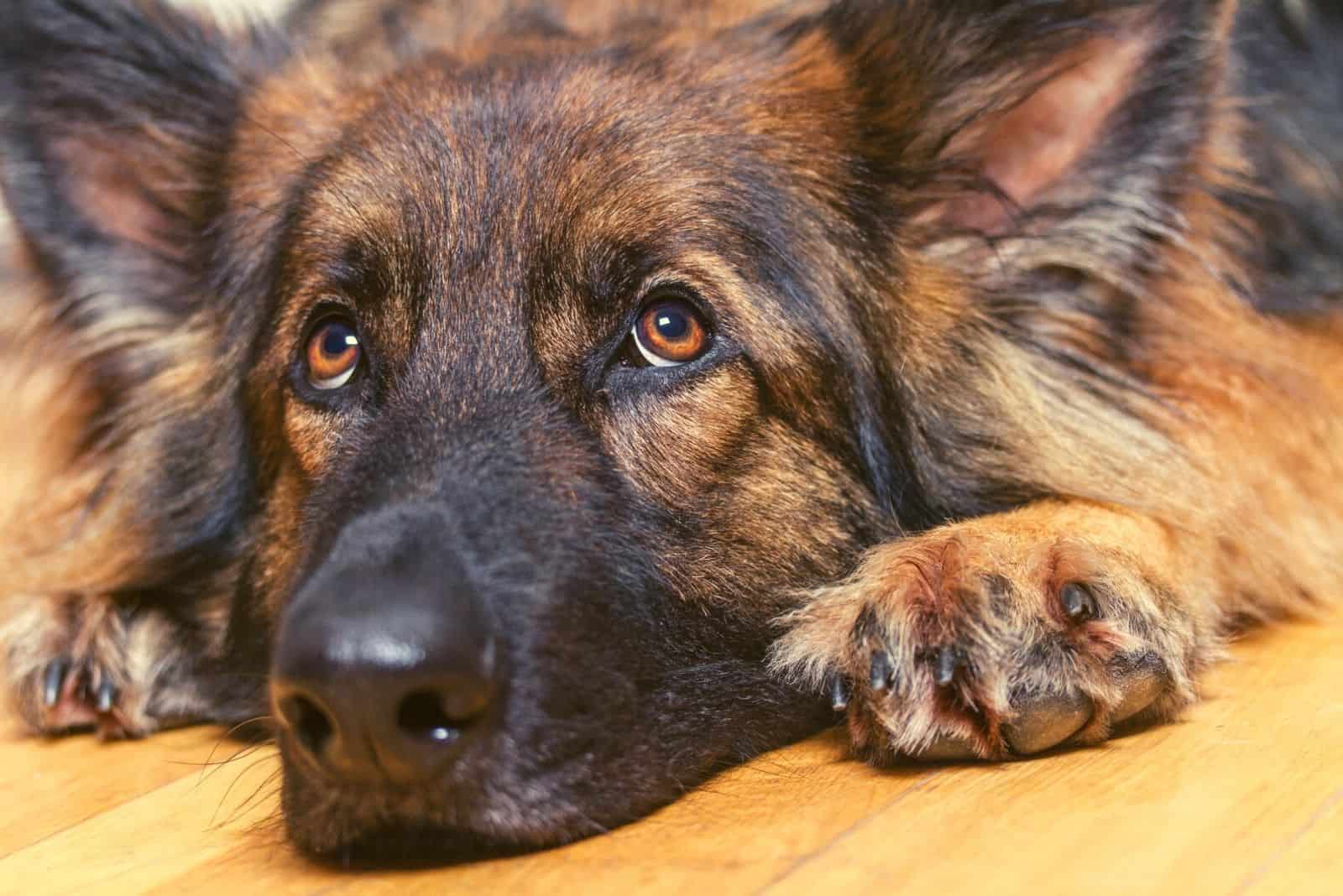
Most, if not all sable German Shepherds change their coat color as they age. In fact, before they reach adulthood, they will change color several times!
Usually, sable German Shepherds will be born with a solid black coat. As they reach 8 weeks of age, however, their color will become lighter.
Still, until they are fully grown, their coat color might darken again, or become lighter over time. This makes it hard for sable German Shepherd breeders to confirm the exact shade that your new puppy will be.
You can get a general idea of what your sable German Shepherd puppy will look like by looking at his parents.
However, if his parents are in quite different colors, then predicting the adult coat color can be challenging.
Overall, though, your puppy should keep the markings it has when it is very young. The only thing that will change is the shade of its base coat, and sometimes some individual hairs might become lighter or darker.
Are Sable German Shepherds Rare?
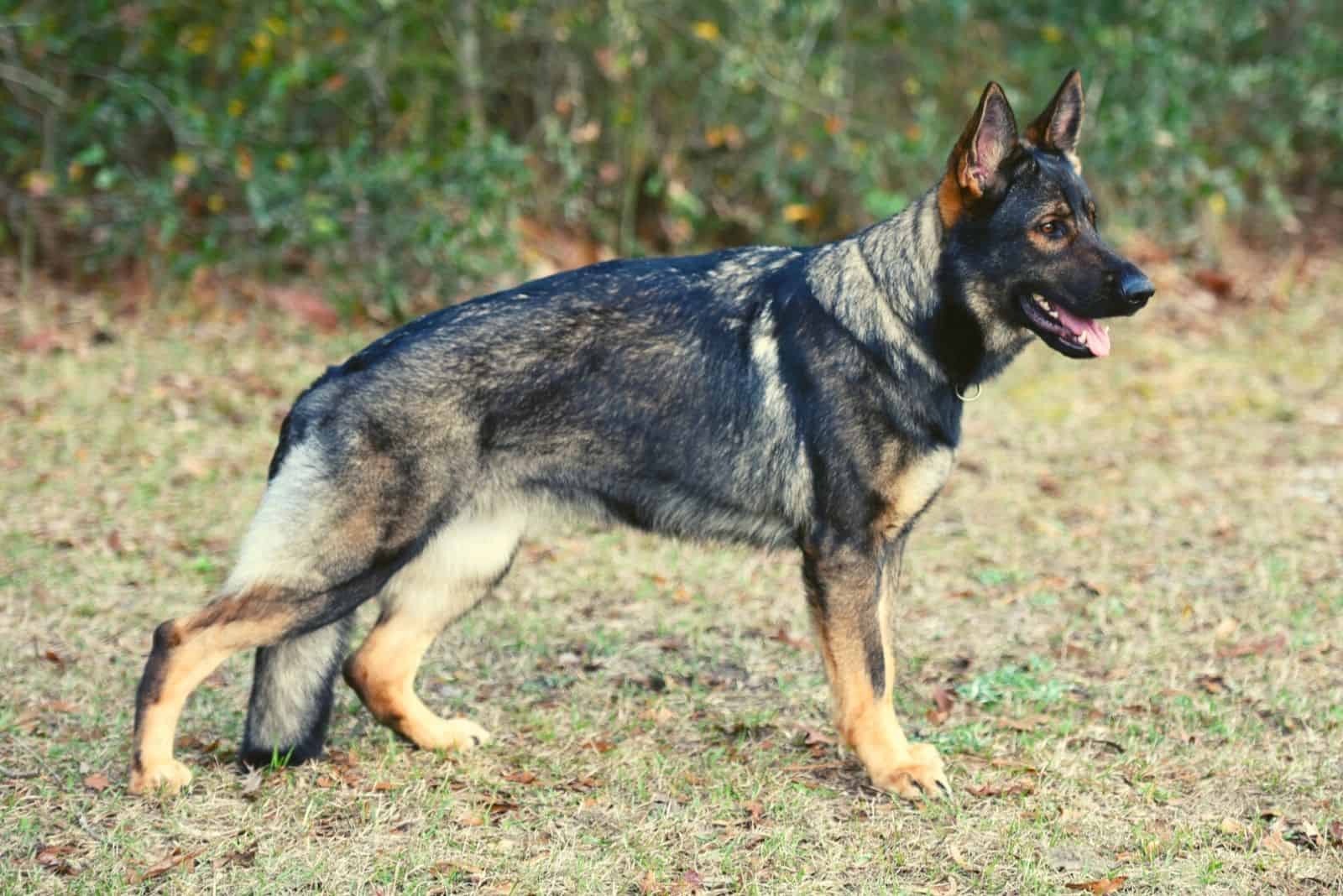
Sable German Shepherds are simply a variation of regular GSDs. They are not a crossbreed, and the sable gene exists in all GSD bloodlines.
However, sable German Shepherds are not a popular choice among regular GSD owners. This makes them a lot rarer than standard black and tan German Shepherds, although they are still not considered rare – at least not red and tan sable GSDs.
Still, if a base color is rare, that makes the sable variation of it even rarer. For example, silver sable German Shepherds are quite rare, while tan sable German Shepherds are fairly common.
The rarest combination of all is recessive black. In fact, this is the rarest of all German Shepherd colors, whether sable or not. These pups look just like solid black German Shepherds, but they carry tan or sable genes hidden in their bloodlines. They can easily be confused with black German Shepherds.
Are Sable German Shepherds Different from Other German Shepherds?
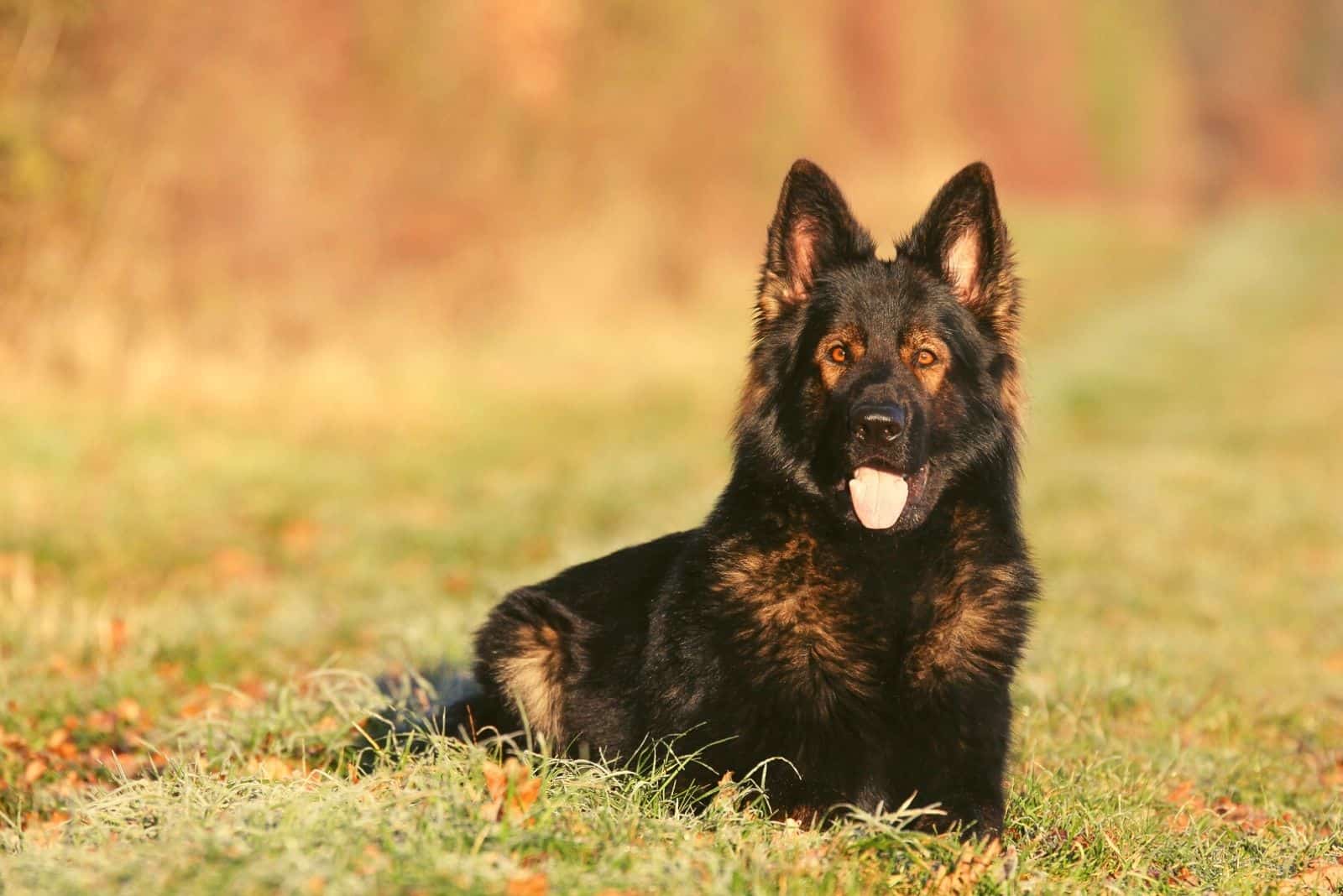
Overall, the only thing that makes sable German Shepherds different from any other German Shepherd is their coat color.
Sable GSDs resemble wolves in that each individual hair has a black tip. Standard sable German Shepherds have a mixture of tan and black coloration.
While German Shepherds aren’t the only breed of dog with a sable pattern, this particular gene is very rare. Other than wolves, it is found in only a few dog breeds.
It is known that the agouti gene controls the sable color in these dogs. It comes in four variations, each for a specific pattern of the black tips on the dog’s coat.
However, the exact genetics behind these sable patterns aren’t known. While sable was the original German Shepherd color, there isn’t enough evidence to prove that black and tan GSDs are descendants of these pups. In fact, there isn’t enough evidence for claims that sable is in any way distinct from any other GSD color.
Are Sable German Shepherds Recognized by the AKC?
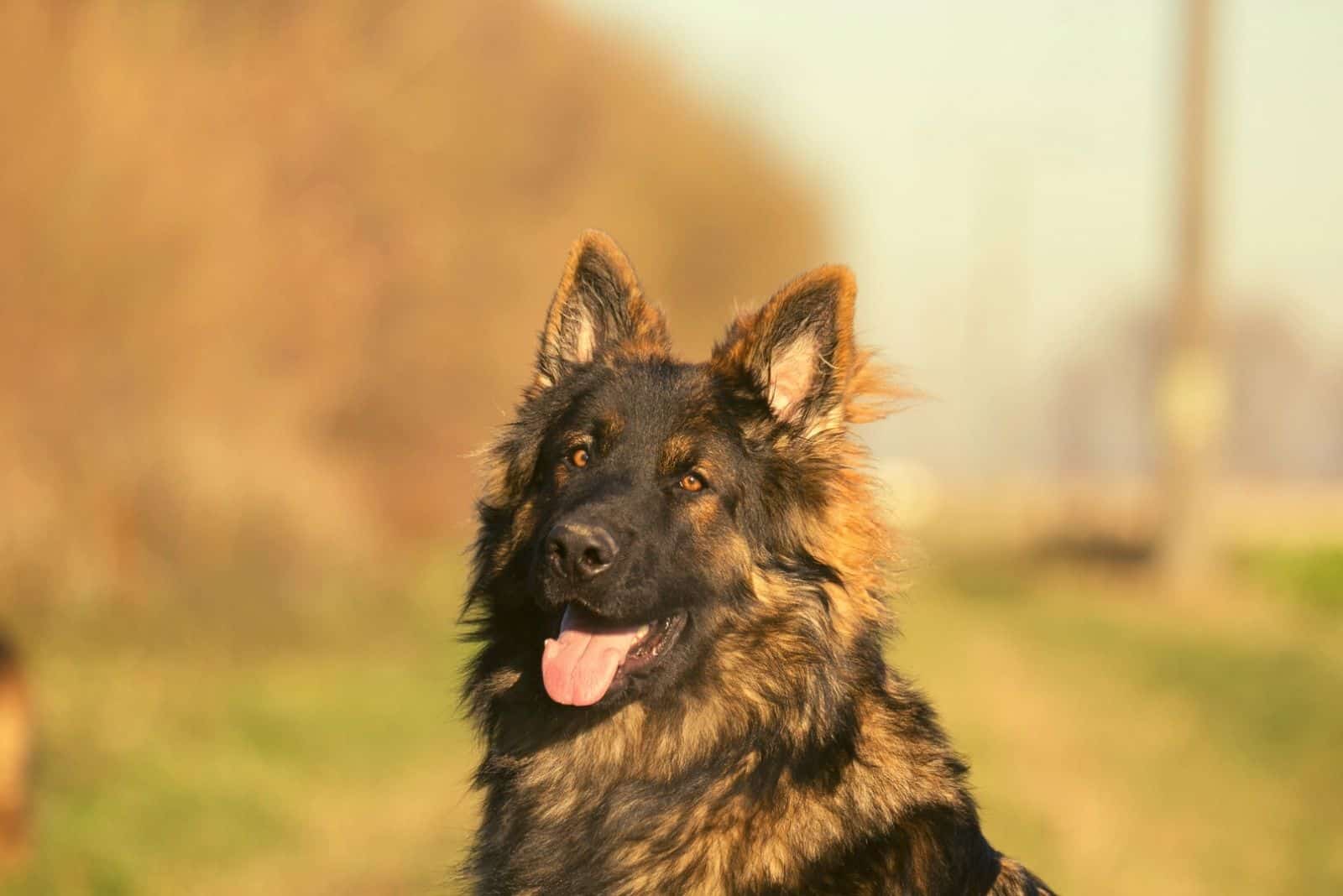
German Shepherds, just like other dog breeds, can come in many colors and patterns. However, this doesn’t mean that kennel clubs recognize all of them. In fact, many coat colors are considered faults and, as a result, they are not acceptable by most major kennel clubs.
Some coat colors are unacceptable because they are connected with an increased risk of certain health problems.
This is usually the case with white or merle coats. These colors are caused by genes connected with vision and hearing loss, so intentional breeding is frowned upon.
A good example of a German Shepherd color that isn’t accepted because of the increased chance of developing health issues is the panda German Shepherd. The same goes for the white German Shepherd. Both of these colors are forbidden by kennel clubs.
Other fur colors are unacceptable because they are a recent addition to the dog breed’s genetics, meaning that all dogs that come in them can be considered crossbreeds.
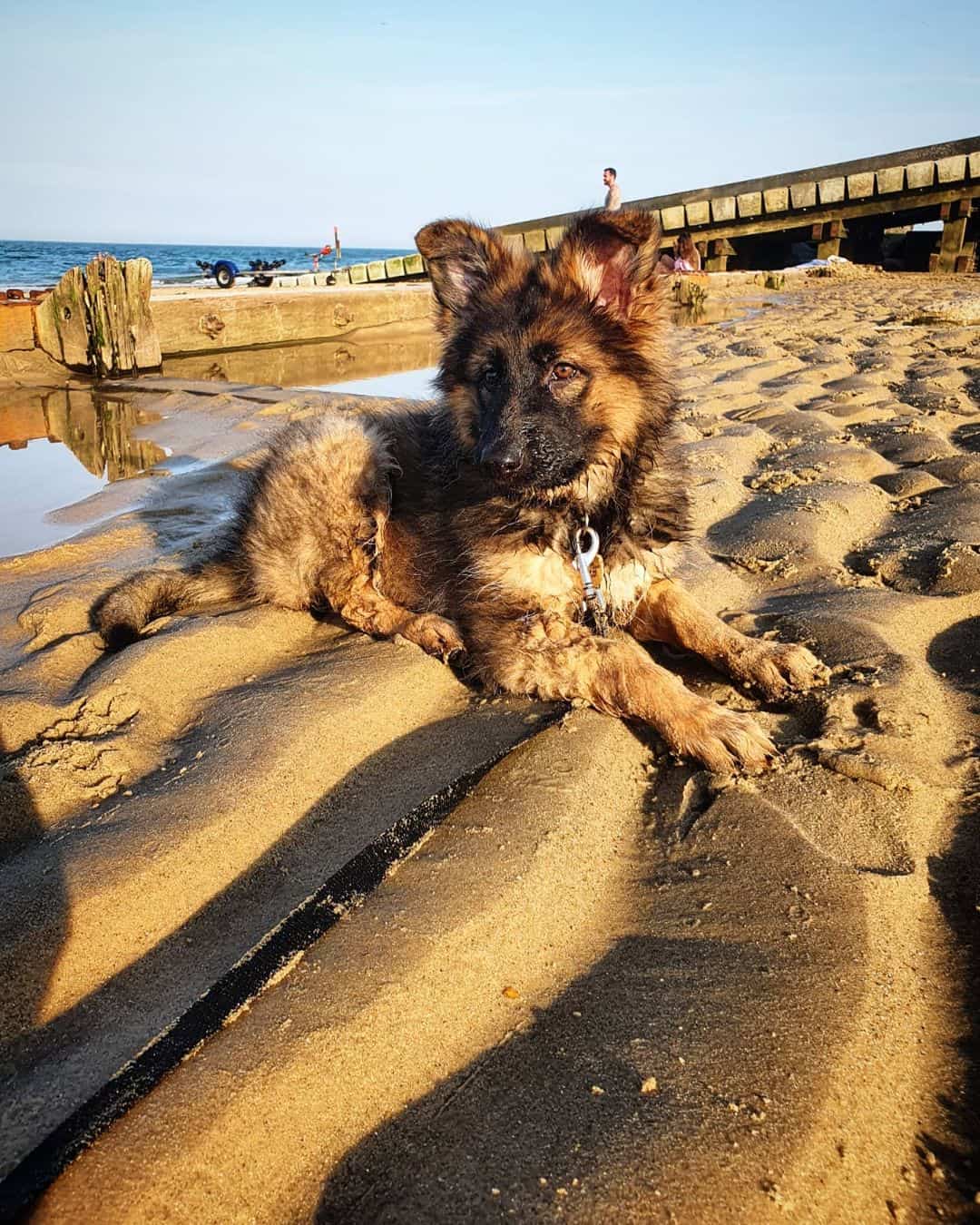
Photo from: @nala.the.sable.gsd
Fortunately, German Shepherds in most sable colors are perfectly fine according to the American Kennel Club (AKC) as well as the United Kennel Club (UKC). This is because the sable pattern has always been inside the GSDs genetics.
The AKC recognizes light and darker sable colors, black sable, and bi-color sable dogs. However, it doesn’t recognize sable German Shepherds that come in some rare colors, such as blue or grey.
Despite this, you can conclude that sable is a perfectly acceptable German Shepherd color.
Still, there is one important thing to note.
While sable German Shepherds are recognized by kennel clubs, it is unheard of that a sable GSD has won or even participated in a dog show or any type of dog competition. This is because the judges favor standard black and tan and black and red German Shepherds.
Because of this, most sable GSDs come from working lines and not from show lines. While this doesn’t seem important for many dog owners, it can affect a dog’s temperament and behavior a tiny bit – but more on that later.
Sable German Shepherd Colors
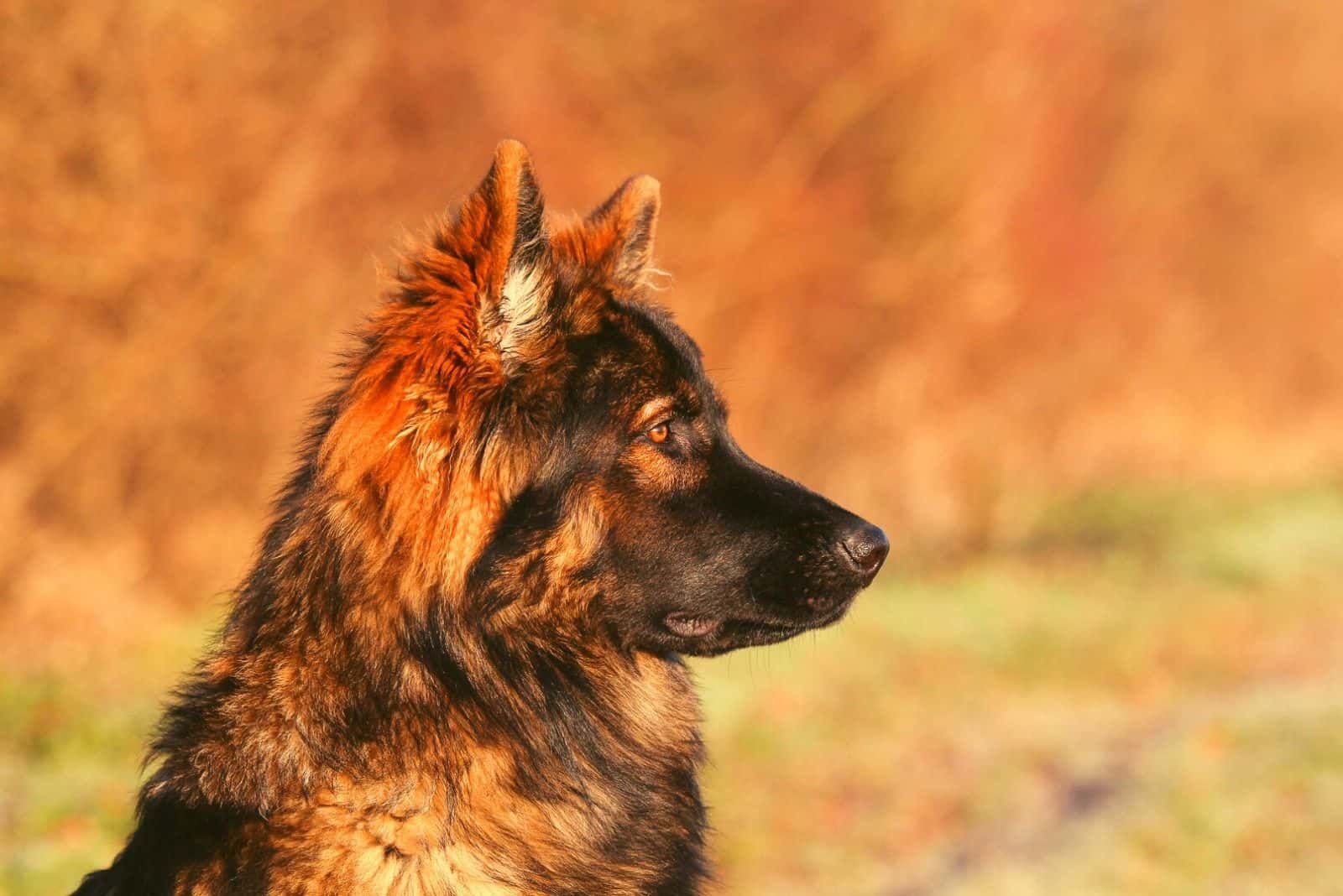
As we’ve mentioned, sable is a pattern and not exactly a color. It consists of a base coat with black or darker tips. Most of these pups have black masks, but it isn’t necessary.
We’ll go over some of the most popular sable German Shepherd colors and help you visualize them.
Tan Sable German Shepherd
Tan sable German Shepherds are the most common variation of sable GSDs. This is because black and tan German Shepherds are quite common as it is.
Some of these pups might appear brindle at a first sight, but upon closer inspection, you would notice how they actually have black tips instead of stripes.
Because of their shade, which is something in between red, brown, and yellow, many dog lovers confuse tan sable German Shepherds with golden sable German Shepherds.
Red Sable German Shepherd
Red sable is another fairly common sable German Shepherd color combination. Just like tan, red is a common coat color in German Shepherds, so many sable GSDs come in it.
In fact, according to many German Shepherd owners, red sable is probably the most unique and gorgeous GSD coat color. The bright red coat color looks striking when combined with black tips.
Black Sable German Shepherd
When talking about black sable German Shepherds, we have to mention that there is a distinction between classic black sable and recessive black sable pups.
Black sable dogs look like a dark shade of sable. While not entirely black, the majority of their coat will be very dark in shade, with a few brighter spots peeking out of this dark coat color.
Black sable German Shepherds are among rarer sable GSDs, but there are still many breeders that reproduce them, so you can find them fairly easily.
On the other hand, recessive black sable German Shepherds look very similar to solid black GSDs, except they are a bit lighter in shade. If you look very closely, you could see that their undercoat is similar to a very dark shade of brown instead of being fully black.
Recessive black sable GSDs are extremely rare. While they appear black in color, they actually carry a sable gene, so they can produce sable or black and tan offspring.
Because this type of black sable is a recessive gene, there are almost no breeding programs that specialize in this particular shade.
Blue Sable German Shepherd
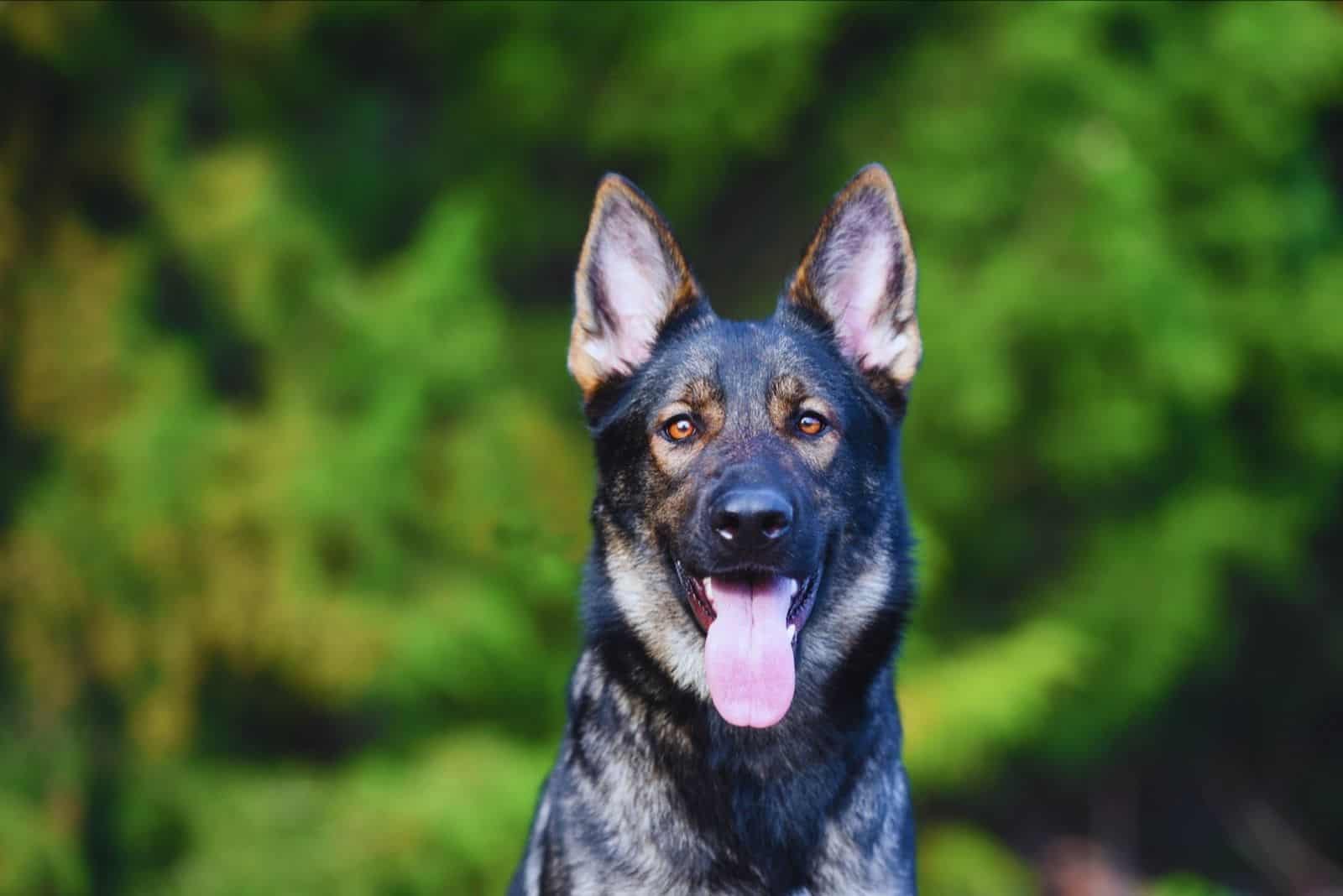
This is another rare sable German Shepherd shade.
Blue is the dilution of the black pigment caused by a specific blue dilution gene. It affects a GSD’s black pigment, turning every bit of the black color into a dark shade of blue.
In other words, your GSD’s hair tips and mask won’t be black, but rather, a dark shade of greyish-blue.
Not just that, but blue is among the German Shepherd variations that doesn’t necessarily affect a dog’s coat. Your GSD can have a coat of any other color (with the exception of black) and still be considered blue. The presence of the blue dilution gene can easily be seen by the pup’s nose color.
Yes, all blue German Shepherds will have a blue nose. The same goes for the blue sable. Their eyes will usually be of lighter color. Sometimes, they can even be blue.
As the blue dilution gene is recessive, this coat shade can be quite rare. Also, keep in mind that this type of sable German Shepherd isn’t recognized by the AKC or any other major kennel club.
Liver Sable German Shepherd
Just like blue German Shepherds, liver German Shepherds are also the result of a recessive dilution gene – except that this particular gene dilutes the black color into a deep brown shade.
Most liver sable German Shepherds won’t have black hairs on them. Instead, the hair tips and markings will be dark brown. Still, sometimes specks of black hair can stay as this gene doesn’t necessarily dilute every bit of black color.
Most importantly, liver sable German Shepherds will have a black nose, amber or green eyes, as well as brown lips and eye rims.
Grey German Shepherd
Believe it or not, grey German Shepherds are actually a type of sable German Shepherd. If you hear someone say they have a grey GSD, chances are they simply have a sable GSD.
Because this coat color resembles that of a wolf, it is also known as wolf grey. These pups can have black markings over grey, or even grey over silver.
Silver Sable German Shepherd
Silver sable German Shepherds are similar to grey GSDs, except they are much lighter in color. Some of these dogs might make you think that you’re dealing with a Siberian Husky German Shepherd crossbreed!
This is a unique color combination for German Shepherds, with or without the sable pattern. Also, instead of a black mask and black saddle markings, these pups will sometimes have markings that are grey in color.
Because of such color overlap, some experts think that silver sable German Shepherds and grey sable German Shepherds should be considered as the same coat color.
Golden Sable German Shepherd
Golden sable German Shepherds have a pale tan or yellow base color which, when combined with black tips, makes them look as if they are made of gold. Many bright liver sable GSDs are confused with golden sable German Shepherds.
The easiest way to tell whether your pup is a yellow liver or golden color is to look at its nose color. While liver GSDs will have a brown nose, golden ones will always have a black nose, as well as dark eyes.
Genetics Behind Sable German Shepherds
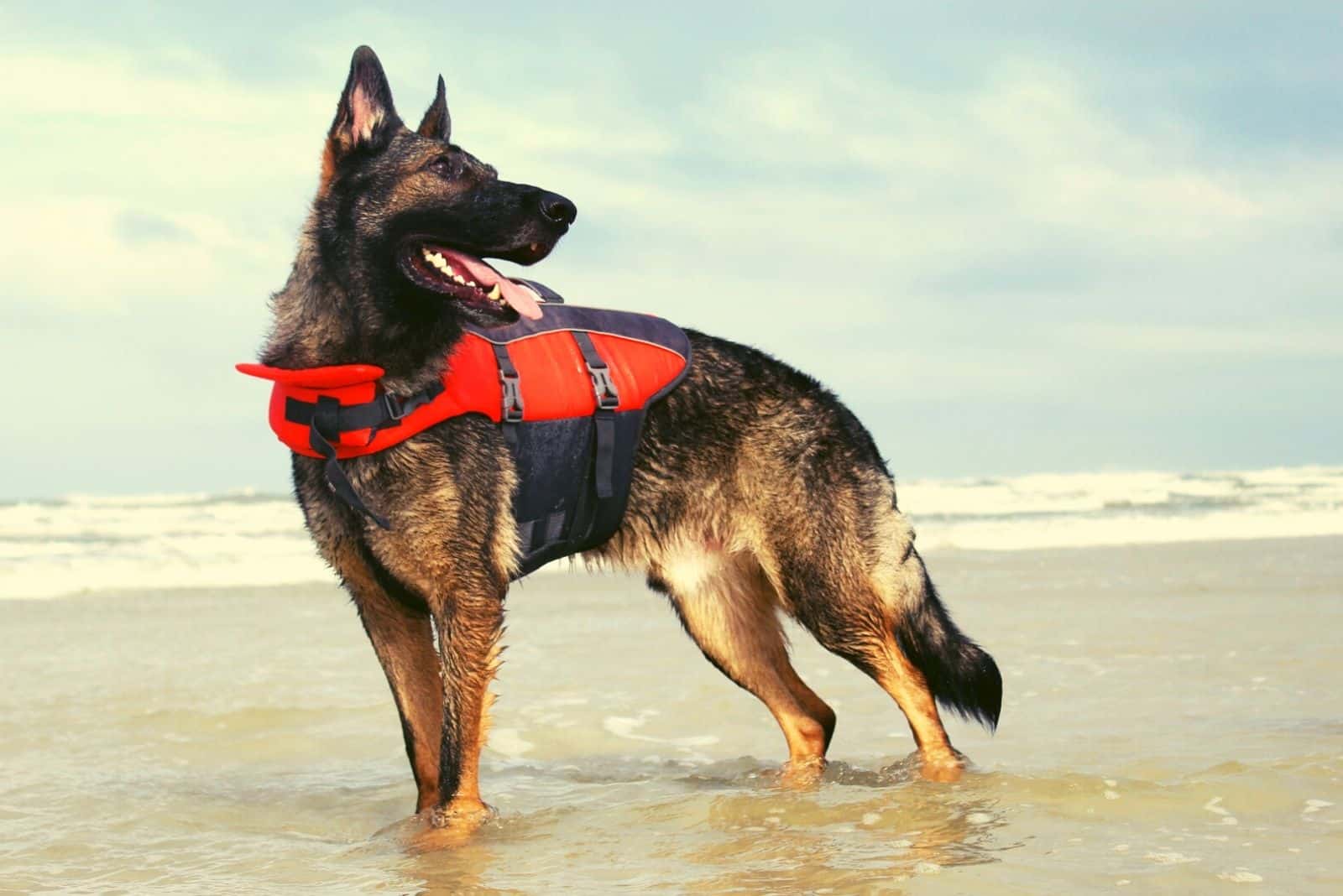
Scientists have studied the genetics behind sable German Shepherds for a long time. While many things have remained unclear, this we do know:
The sable coloring is caused by the dominant gene that can be written as (AW AW). For example, black and tan is (AS AS), bicolor is (AT AT), solid black is (AA), while recessive black is (aa). All of these color genetics are recognized by the SV.
The SV is the breed standard set by von Stepanitz, and this remains something that all other breeders look up to.
Of course, there are many mutated colors, such as the pure white GSD and the panda GSD. They are the result of the mutation of the original genes.
Still, not all sable dogs are (AW AW). Some carry recessive genes in them – for example, (AW a), a German Shepherd that would appear sable but could have a recessive solid black offspring.
The sable gene is the most dominant color gene in German Shepherds. In other words, all dogs with the (AW) allele will appear sable, even though they might have an offspring in some other color.
Does the Sable Gene Affect a Dog’s Personality or Health?
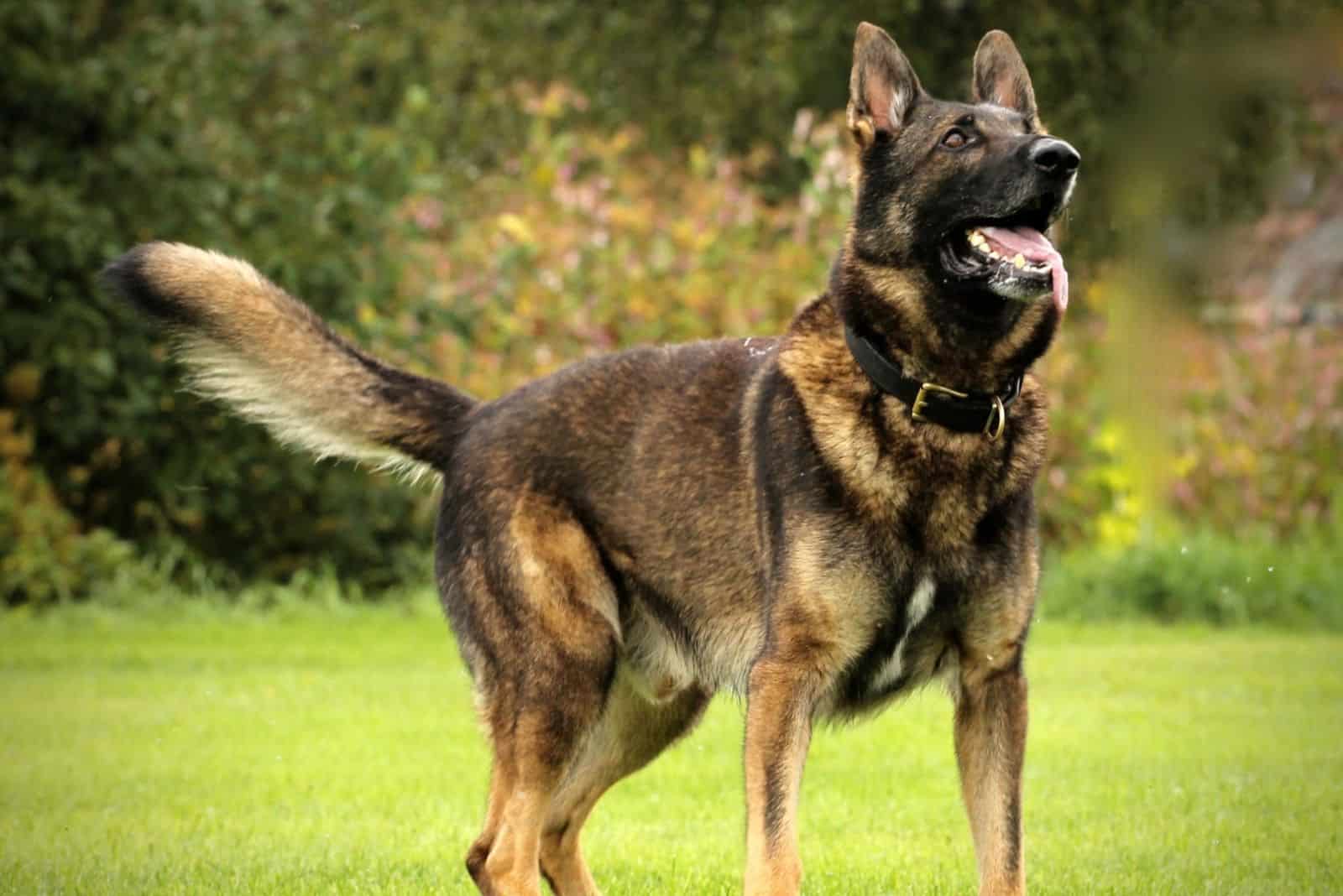
Many dog lovers want to know if dogs of a certain color are more at risk of getting some severe health problem.
While it’s true that some genes, such as genes for parti markings or a solid white coat carry an increased risk of specific health conditions, there is no indication that the sable coloring damages a dog’s health in any way.
The agouti gene is responsible for the sable color. This is a well-known gene that doesn’t affect a dog’s behavior or health.
In fact, the only things that provenly affect a dog’s behavior are nurture and nature. In other words, the way you or the breeders treat dogs is how they will behave.
A puppy that grew up with loving human parents will likely become a well-behaved, polite dog. However, if you abuse your dog, he will become aggressive.
Of course, socialization is necessary for German Shepherds as they are large and protective dogs. If you don’t socialize them on time, they can become dangerous.
Still, this is entirely up to the owner and not to the sable coat color – or any other coat color for that matter.
Sable German Shepherd Temperament
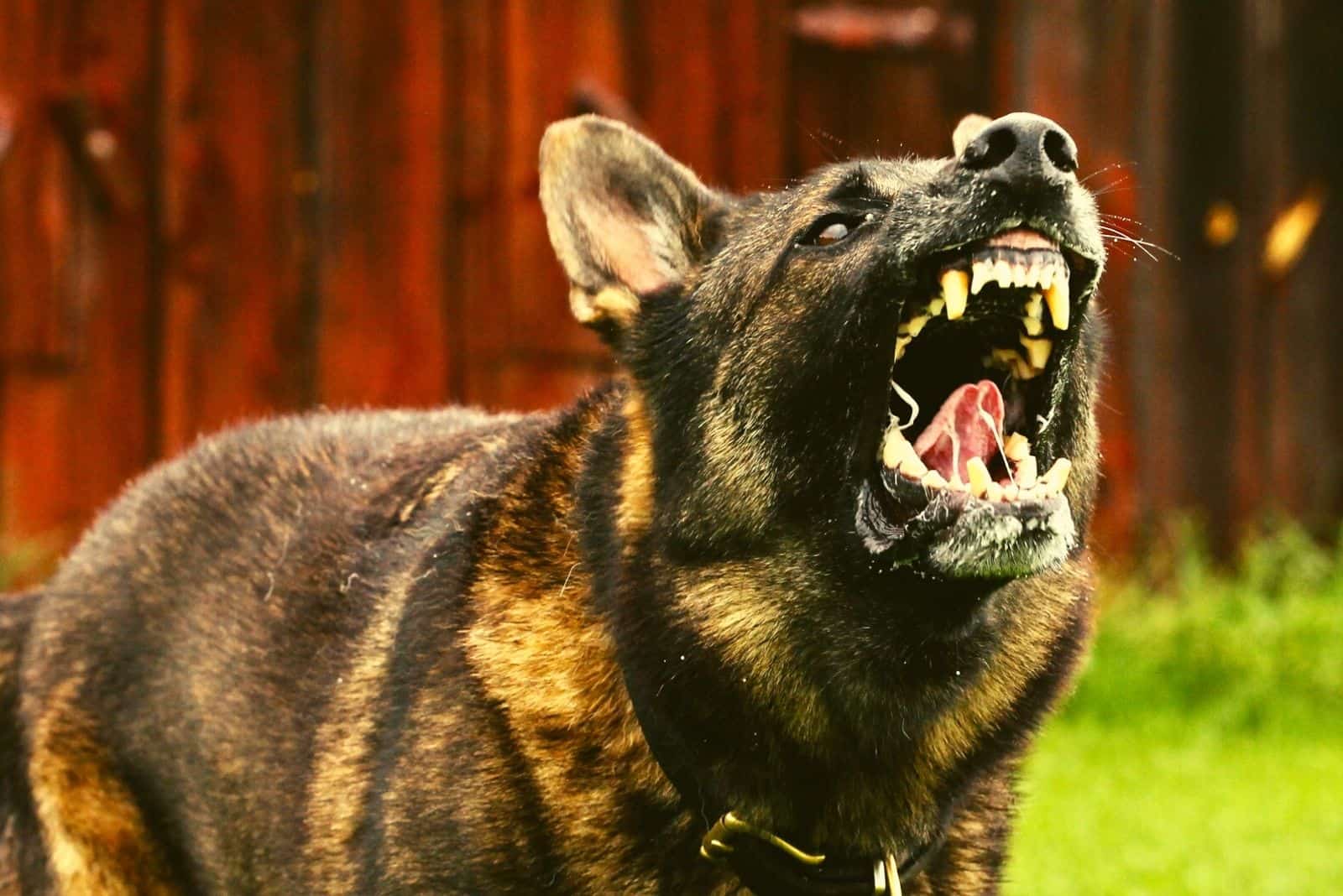
Sable German Shepherds are bred to be working dogs, such as police dogs and service dogs, and not show dogs. This means that they might be a bit more used to harsh working conditions, and that they are not as used to being indoor dogs as black and tan or black and red GSDs – although this slight difference in temperament is barely noticeable.
Other than that, the purebred sable German Shepherd has the same temperament as any other GSD. This means that it is a very intelligent dog that is effortless and straightforward to train. He can learn new tricks in no time.
Keep in mind that you should make sure your German Shepherd gets lots of not just physical exercise, but also plenty of mental stimulation. Sable GSDs can get bored easily, and this can result in bad behaviors.
GSDs are loyal to their owners, and they won’t back down if something bad happens. At the same time, they’ll want to stay with you all the time. If you get a sable German Shepherd, be prepared that you’ll no longer do anything on your own, from grocery shopping to going to the toilet!
Unfortunately, this also means that sable GSDs are prone to separation anxiety if left alone. If you’re someone who works long office hours, then this might not be the best dog for you. Separation anxiety can lead to many destructive behaviors, and your furniture or walls might suffer.
While GSDs are serious working dogs, they are full of love and have a silly side to them. While they’ll be hard-working when on duty, they can be cuddly and playful while at home.
This also means that sable German Shepherds do great with children – but under one condition. Your kids need to know how to behave around such large dogs. While sable GSDs are patient, they have their limits, and they might snap if children go overboard.
Your kid needs to know not to pull the dog’s ears and tail, and not to touch his nose, paws, or genital area. Also, children shouldn’t scream or yell around your GSD. Dogs have much keener hearing than humans. If your kids are too loud for you, they are unbearable to your pet.
Also, sable German Shepherds are large dogs. They might accidentally knock a child over while they’re running around, or they might hurt them during rough play. This is why we’d never advise you to leave a small child alone with a strong dog such as a GSD.
Other than that, sable German Shepherds make amazing family dogs that will bring joy and a feeling of security to every family member.
Long-Haired Sable German Shepherd
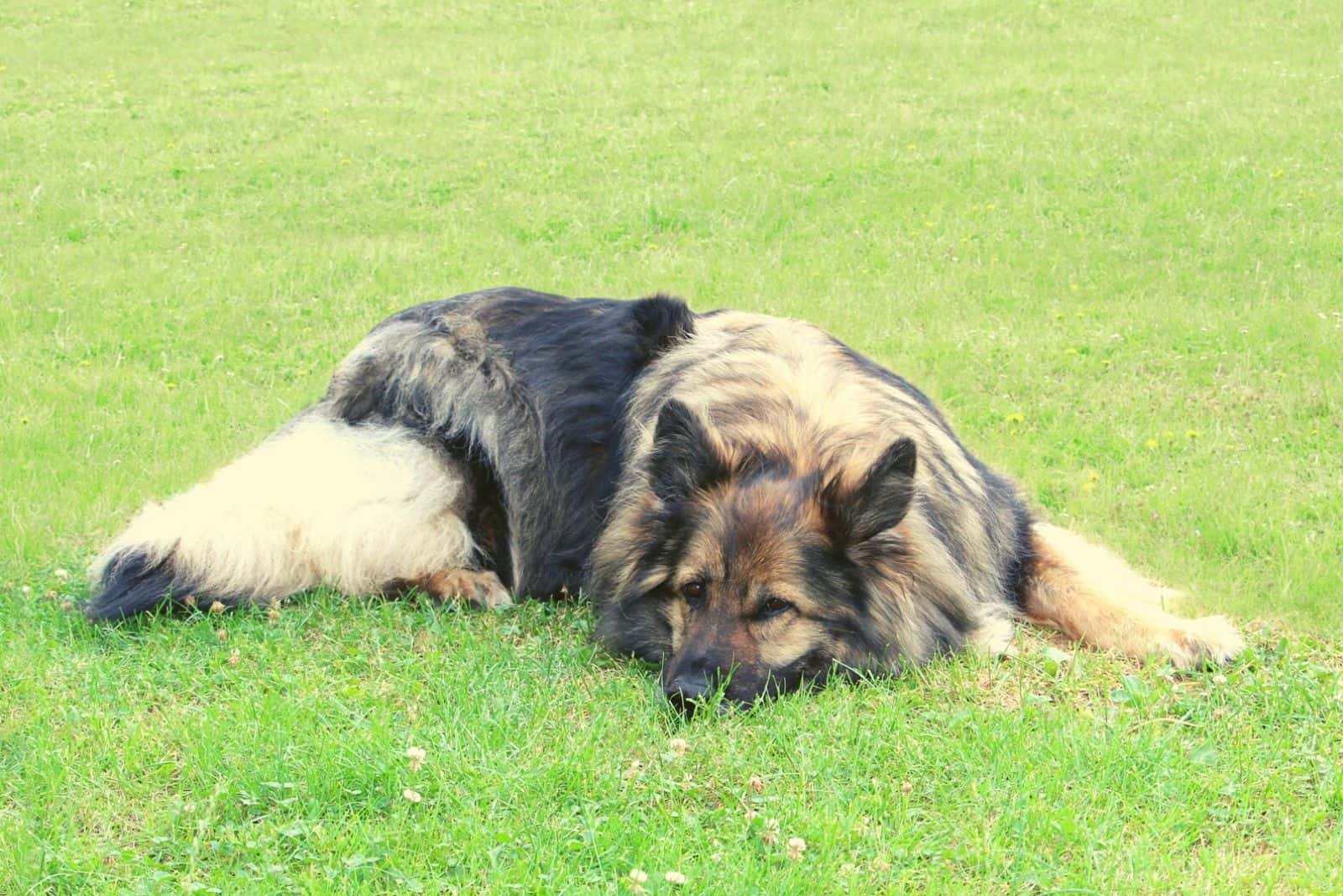
You might think that the only difference between a short-haired and a long-haired sable German Shepherd is in the length of their fur, but there is more to this.
First off, long-haired sable German Shepherds, while they have a longer, fluffier coat, don’t have an undercoat. This makes them less capable of dealing with cold winter weather, unlike their cousins with double coats.
We didn’t mention this just to let you know what to expect when you get yourself a new sable GSD. In fact, this also means that historically, GSDs with a long coat weren’t able to participate in outdoor herding work as much as their short-haired counterparts.
Because of this, long-haired sable German Shepherds are more accustomed to indoor living, so they are calmer and more used to being around their humans all the time.
Not just that, but long-haired German Shepherds of any color are not accepted by the AKC, and therefore, cannot participate in dog shows. Because they don’t fit the breed standard, they have been typically bred as family pets.
All of this makes long-haired sable German Shepherds a lot more mellow compared to standard short-haired sable GSDs. Most long-haired GSD owners have reported that their pooches are cuddlier and friendlier than regular German Shepherds.
If you want to get a sable German Shepherd with the sole purpose to be an amazing family pet, you might want to consider getting a long-haired one.
Sable German Shepherd Health and Lifespan
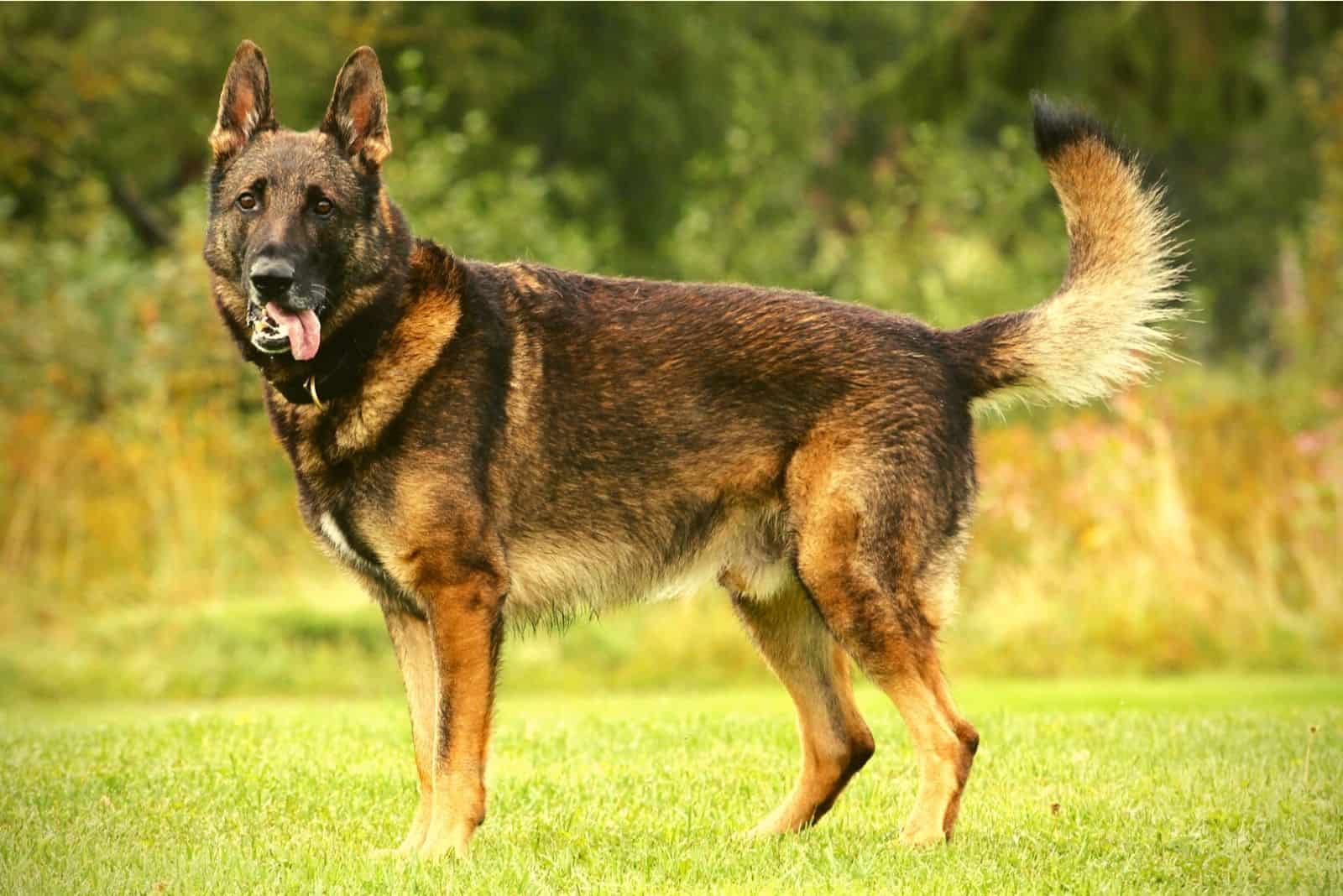
As of 2021, there is no indication that the gene responsible for the sable coat affects the German Shepherd dog’s health in any way. They are still prone to any health problem that standard GSDs have.
The most common of these issues is hip dysplasia. This is an orthopedic condition that happens when the hip is abnormally formed, so the hip doesn’t fit properly into the hip socket. This causes pain and difficulty in walking.
Hip dysplasia is hereditary, and not much can be done to prevent it entirely. However, environmental factors are important for the progression of this health condition, so there are some things you can do to keep it under control.
Think of hip dysplasia as arthritis in humans. In fact, severe hip dysplasia can lead to a specific type of arthritis in sable German Shepherds.
Make sure your German Shepherd is active so his bones and joints are well formed. Active dogs are less prone to any orthopedic condition, and hip dysplasia is no different. One of the best activities you can make your German Shepherd do is swim.
Another thing you can do is make sure your sable German Shepherd dog isn’t obese. Feed him only high-quality dog food. If you think this type of diet is expensive, don’t worry. There are plenty of affordable, yet healthy dog food brands on sites such as Amazon.
Good dog foods have to have lots of protein and not as many carbs. This will make sure that your doggie is energetic and healthy.
You might also consider replacing store-bought dog treats that are high in bad nutrients with healthy alternatives from your kitchen. Sure, some human foods such as anything spicy can be harmful for your pet. However, tuna, fish sticks, or peppers, can be very beneficial for your four-legged friend.
Another important thing is to never miss vet check-ups. If you identify any health issue early on, you have a greater chance of preventing further disease development.
Of course, you should always buy from reputable breeders who can tell you the precise health history of the parent breeds. As many diseases that plague German Shepherds are genetic, a puppy born from healthy parents will have fewer chances of getting sick.
While sable German Shepherds are prone to a few more health conditions, such as Progressive Retinal Atrophy (PRA) and bloat, they have a decent lifespan, and most live more than 11 years.
Sable German Shepherd Puppies
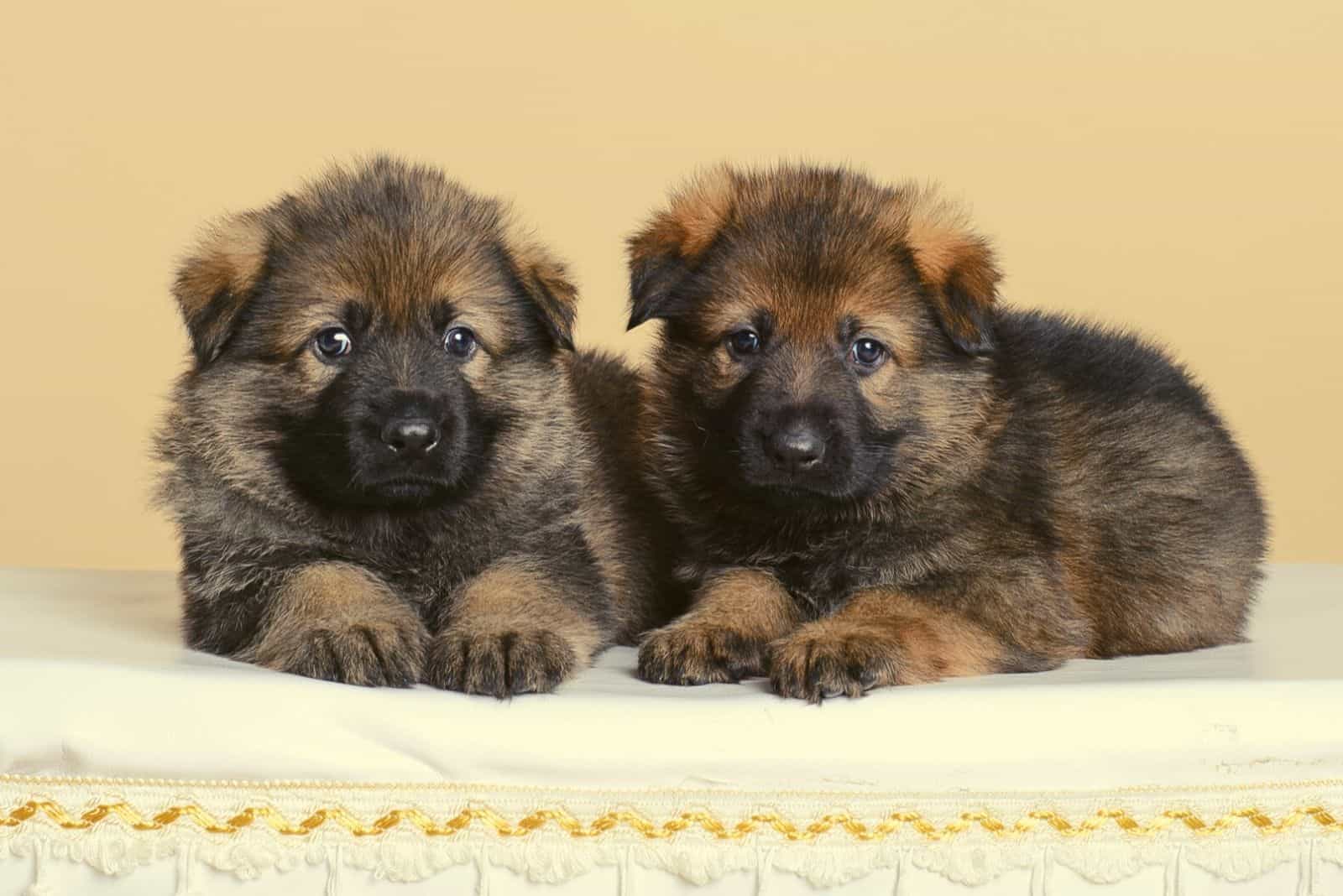
When it comes to sable German Shepherd puppies, when they are born, they can be hard to differentiate from black GSDs or any other dark German Shepherd color. As they grow older, however, the sable coloring will become more obvious.
Despite the sable gene being dominant, this can become a bit tricky. You can never know (at least not without extremely expensive genetic testing!) what recessive genes might be hidden. In other words, you might breed two sable German Shepherd dogs and end up with a black and tan puppy.
Also, sable German Shepherds aren’t that popular. This is another reason why not many breeders dare to specialize in breeding them.
Sable German Shepherd Breeders
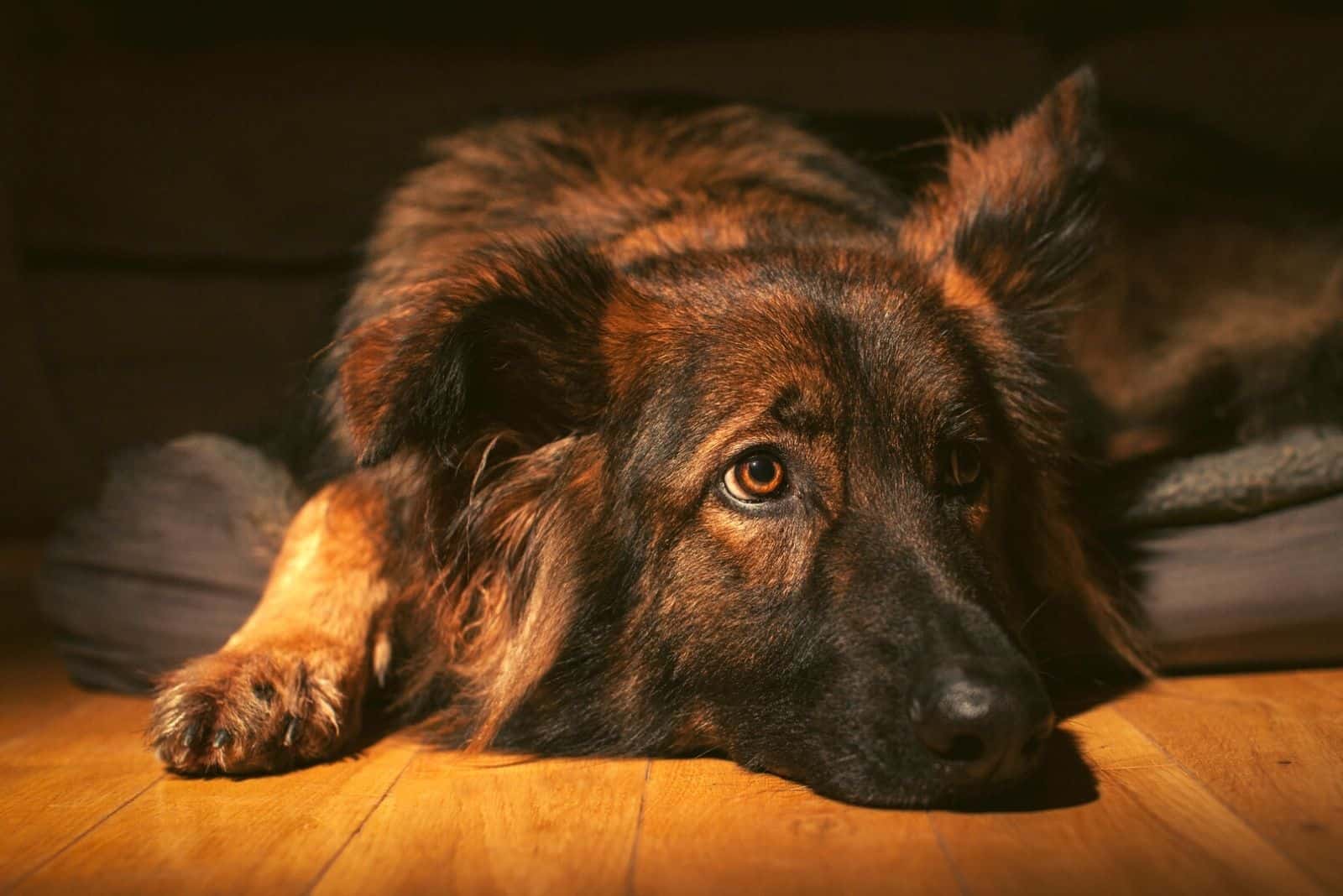
Sable German Shepherds are rare. However, many standard GSD breeders also breed sable GSDs, so you might find them near you.
If you have wondered about the price of sable German Shepherds, you should know that they usually cost the same as regular GSDs, which is around $1,000. However, quality dogs with good bloodlines tend to be more expensive.
Some might end up costing thousands of dollars!
While this might sound like too much money to pay, there is one thing to keep in mind: reputable breeders have a reason behind the high price of their puppies.
Responsible breeders will conduct all the necessary health testings of their parent dogs as well as all puppies from the litter. They will do all they can to ensure that their dogs are healthy, so they can sell you only high-quality pups.
Not just that, but they usually begin training and socializing their puppies when they are only a few weeks old. This means that the chances of your dog misbehaving or acting out of the ordinary are very slim.
If the breeder is selling their sable German Shepherd puppies for a low price, this likely means you’re dealing with a backyard breeder.
Backyard breeders don’t literally breed puppies in their backyard. However, they are usually people who have ended up with an unwanted litter that they now want to sell.
While there is nothing inherently wrong with this, these dog owners usually don’t know much about dog breeding.
This means that the chances of you getting an unhealthy or misbehaving dog are quite high.
Places to certainly avoid are pet shops and puppy mills. These locations are only looking to profit, and they don’t care about anything else. Dogs bred at puppy mills tend to have plenty of health problems.
In other words, if you try to go cheap on the initial price, you’ll likely end up paying much more in medical costs or for professional trainers later on.
Should You Adopt a Sable German Shepherd?
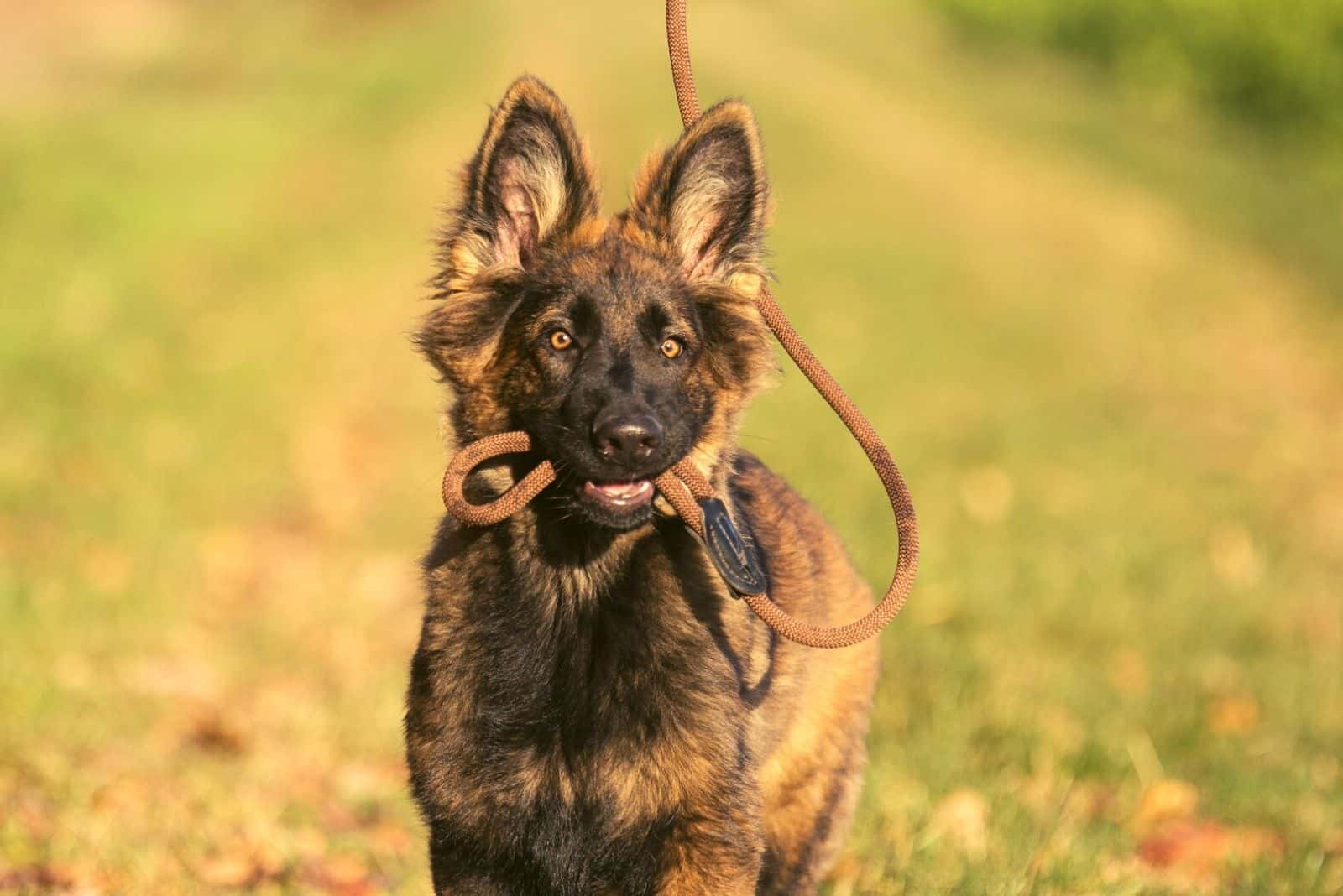
Adopting a dog is certainly the most ethical and humane thing that any aspiring dog owner can do. This way, you’ll be helping a dog who is abandoned, and you’ll only end up with low adoption fees.
However, there are a few risks with adopting dogs. First off, you need to look for trustworthy adoption centers. Such locations will make sure that their dogs are healthy and evaluated before they are sent off to their new home.
Also, you can never be entirely certain on the background of your new dog, both medical and environmental wise.
You might end up with a dog that has a hidden genetic defect or an abused dog who needs additional socialization.
Some people can agree upon this, and this is a risk worth taking. However, on some occasions, such as if you have a small child, it’s important to know what type of dog you’re adopting.
Is a Sable German Shepherd the Right Dog for You?
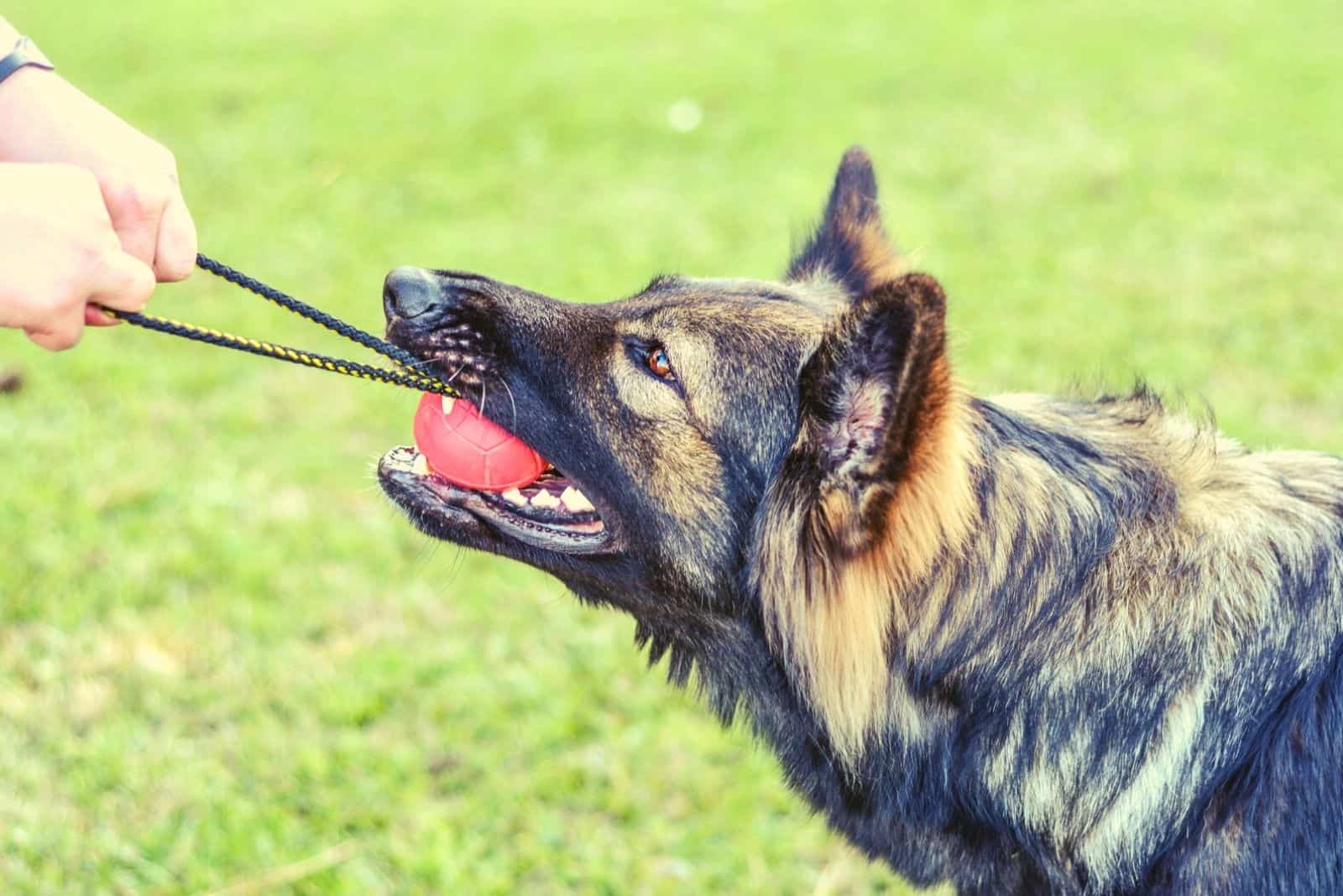
If you love black and tan German Shepherds, you’ll also love sable German Shepherds. These dogs make amazing and loyal family pets, and they can even be great nanny dogs for your kids.
However, you need to be aware that these are large and active dogs. They need to learn how to behave around small children and other pets. While they are friendly, some socialization is necessary, especially if you don’t intend to keep your sable GSD as a guard dog only.
They are not suitable for people who live in confined apartments and who don’t like to spend at least an hour a day walking. They need lots of exercise and mental stimulation in order to behave, and you have to provide this to them.
If you have kids, then another important thing is to teach them how to respect their new family member. Sable German Shepherds are known to love to have some space from time to time.
In the end, the perfect dog breed for you only depends on your preferences and what you can provide for your new pet. If you want a fluffy and loyal family member and you are ready to commit to him, then a sable German Shepherd is an excellent choice.
